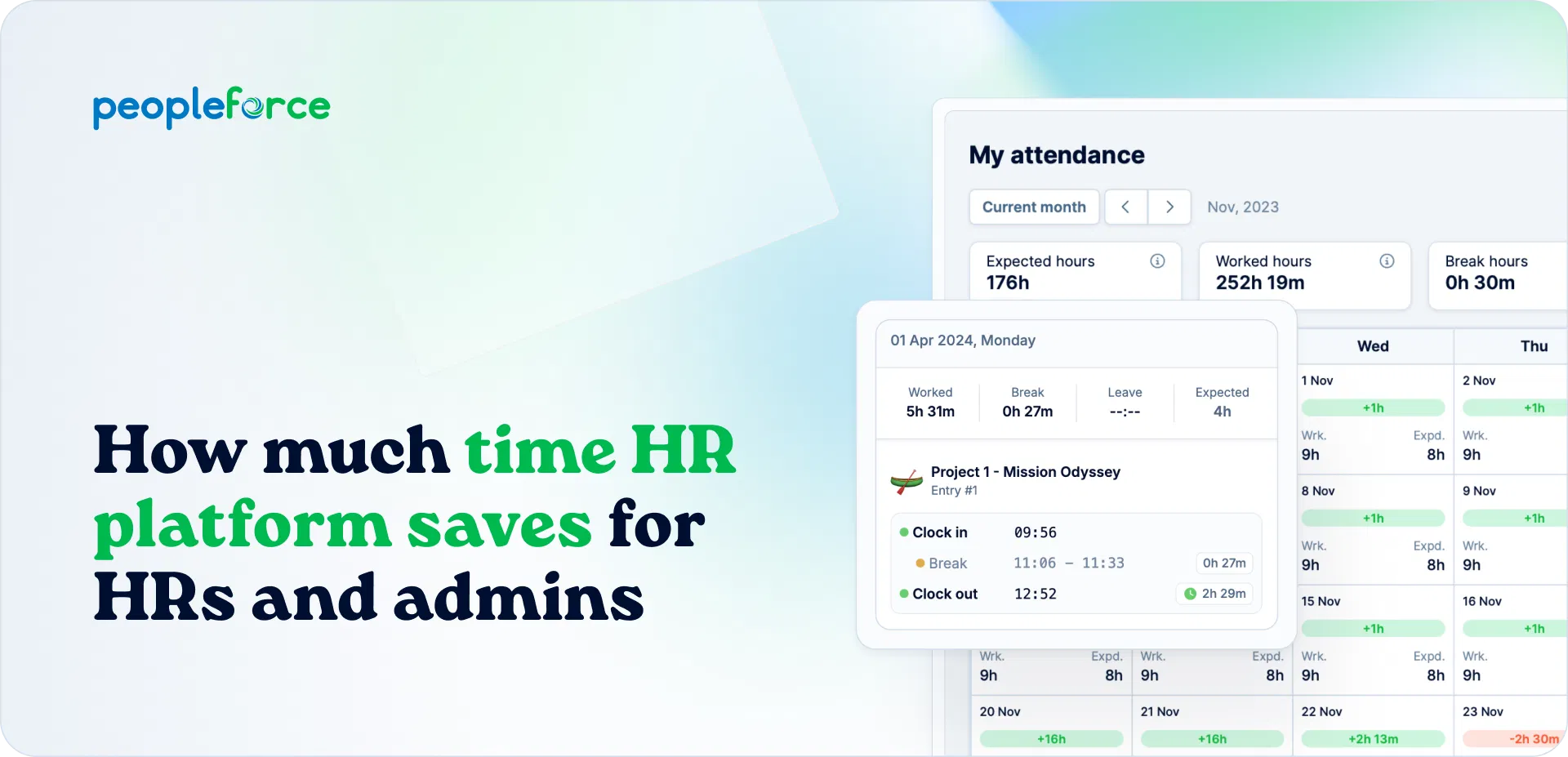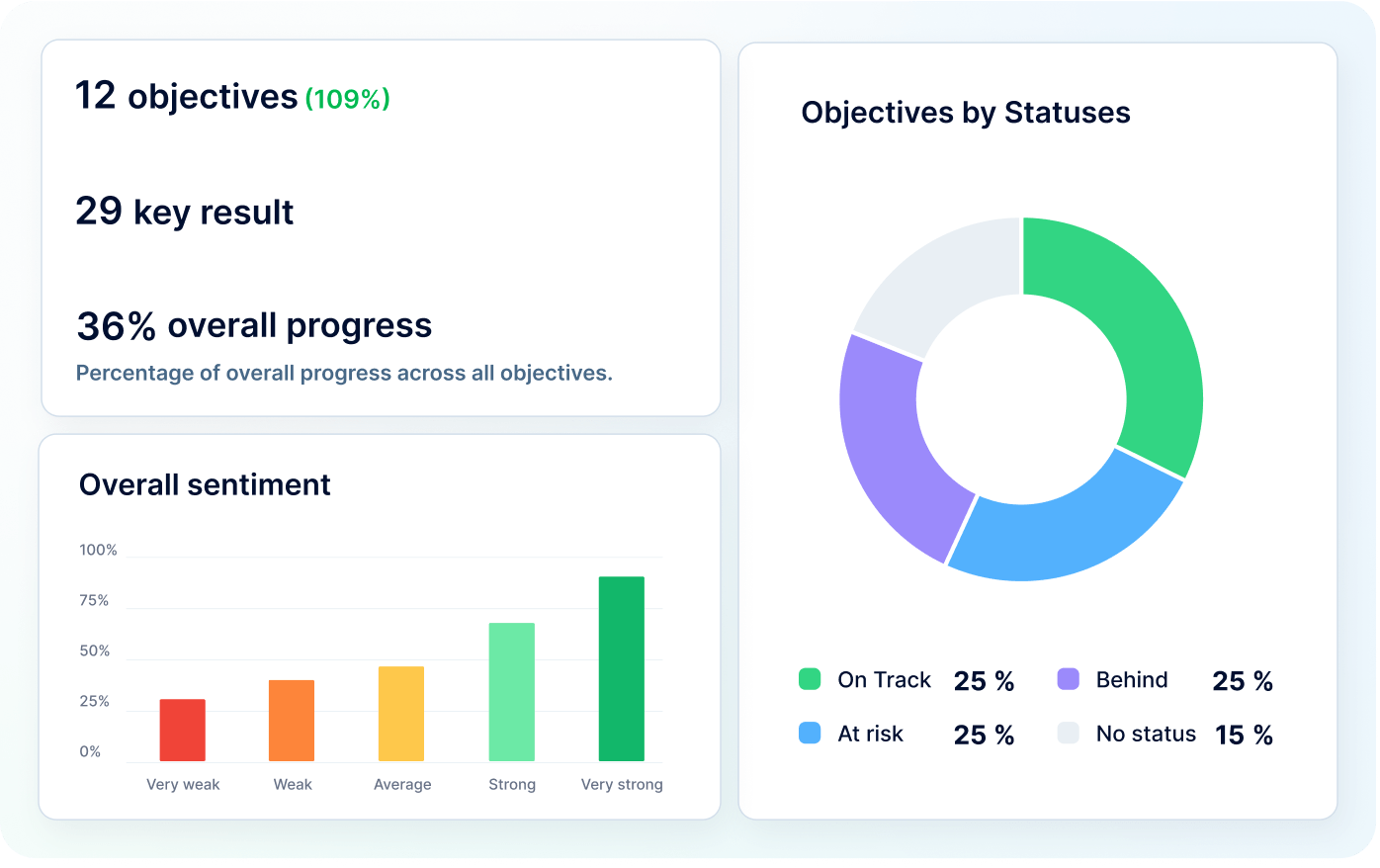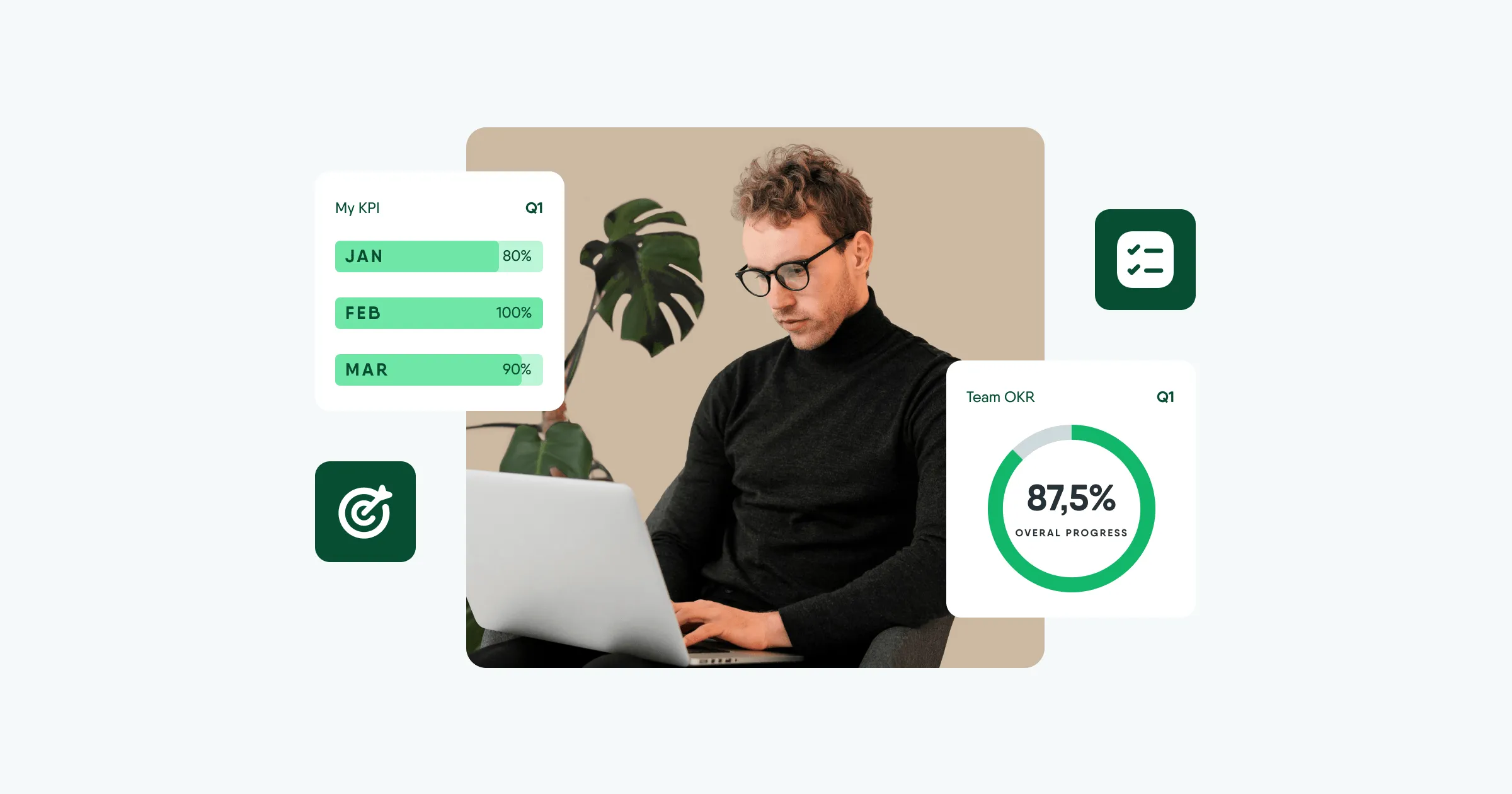
How much time HR platform saves for HRs and admins
As companies grow, HR professionals face an overwhelming array of responsibilities, from recruiting and onboarding new employees to properly understanding performance goals. At the same time, the need for accuracy, compliance with changing labor laws, and the demand for quick turnaround times add to the already heavy workload.
Modern HR software comes to the rescue by integrating various HR functions into an all-in-one, user-friendly HR system that can streamline these processes, reduce manual workloads, and enhance overall efficiency. Let’s discuss some ways in which such platforms can streamline the operation time of HR teams.
Centralization of HR data
Centralized HR data management means consolidating all employee data into a single, integrated system. This approach streamlines how information is stored, accessed, and managed across various HR processes.
Having a single, centralized place to store all HR-related information makes finding and updating it easier. This can save a significant amount of time for HR team. Such Human Resources management systems provide a secure and reliable way to centralize and store employee data, which can be monitored from anywhere. This helps ensure compliance with data protection regulations and enhances data security.
PeopleForce centralizes all employee information, creating a sole source of truth. This includes personal details, skills, certificates, and other relevant data. For example, CoreHR provides information about each employee, including position and planned leaves, relevant documents, tasks, contacts, and much more. HR specialists can manage access and permissions rights of information for other employees. No more searching for employee information across multiple sources.
How much time can be saved?
Let’s say this. Assuming it takes 5 minutes to find information in the old system and 1 minute in the new, with an average of 4 searches per day per HR staff member, for a team of 5 HR staff, the daily time saved is approximately 100 minutes.
The HR platform saves up to 10 hours of the HR specialist team's working time per week that would otherwise be spent searching for necessary information.
Automation of HR routine
Human resources management system can automate many routine tasks, such as tracking employee hours, managing benefits, and maintaining employee records. Employees can request for leave directly through leave management system, and managers receive instant notifications and can approve or decline requests with a click. HR platforms automatically update leave balances, ensuring accuracy and transparency in storing employee data.
If manual processing around routine tasks takes around 30 minutes per employee per month, automation with an HR platform could reduce this to 5 minutes. For 200 employees, this would save approximately 83 hours per month.
Simplifying the recruitment process
Modern HR platforms enable the posting of job vacancies across multiple channels with just a few clicks. They also come equipped with Applicant Tracking Systems (ATS) that organize and filter applications based on predefined criteria, significantly reducing the time spent on sorting through resumes.
PeopleForce simplifies the recruitment process through its Recruit product, offering several key features:
All data in one place
Resumes, contacts, files, reviews, and candidate ratings are all available in one click. This eliminates the need to search for information across multiple sources.
Applicant Tracking System (ATS)
Gives full control over every aspect of the recruitment journey, ensuring a seamless and efficient process.
Job site integrations
You can publish and edit vacancies, add job seekers, and communicate with candidates from job portals directly in PeopleRecruit.
Job offer workflow
The process of accepting a job offer is shortened with the electronic signature feature. Candidates just need to put an electronic signature in your job offer, and you will immediately receive a notification.
Recruitment analytics
Utilize recruiting analytics to swiftly access insights on how your recruiters operate, assess their effectiveness, track job progress, identify bottlenecks, and more. It enables you to make informed decisions and optimize your hiring strategies.
For each recruitment cycle, this could save approximately 10-15 hours in posting jobs and an additional 20-30 hours in screening, totaling 30-45 hours per recruitment cycle.
Streamlined onboarding
Proper employee onboarding can lead to a positive experience, helping new hires understand their roles and responsibilities, enabling them to perform their jobs effectively from the early stages, and encouraging them to stay longer with the company. This is where specific capabilities of the HR platform come into play.
PeopleForce provides a comprehensive onboarding solution to ensure a smooth and positive experience for new employees through a number of useful features.
Preboarding
The onboarding process starts even before the new hire’s first day. You can strategically plan onboarding tasks to ensure the newcomer feels immediately connected, aware of their responsibilities, and part of the team.
Customized onboarding workflows
You can make your onboarding workflow unforgettable for new hires by incorporating exciting tasks, captivating introductory text, and enriching all communications with images, video instructions, and attachments. Using clip creators can make it even easier to add short, engaging video instructions that feel personal and relatable.
Reducing the onboarding process by half, from 8 hours to 4 hours per new hire, results in a saving of 4 hours per new employee. For 30 new hires a year, this totals 120 hours annually.
Leaves and attendance management
The move to digital time-tracking has considerable benefits. By automatically calculating accurate work hours, HR systems help ensure correct employee compensation, significantly reducing payroll errors common in manual timekeeping.
Modern HR platforms have significantly advanced the management of time and attendance by integrating digital time-tracking features. The real-time attendance monitoring offers immediate visibility into workforce dynamics, including who is working, who is absent, and who is on leave, which is particularly useful in managing flexible schedules and remote work.
Additionally, these platforms incorporate integrated absence management that enable employees to request time off directly.
Modern HR platforms have significantly advanced the management of time and attendance by integrating digital time-tracking features. The real-time attendance monitoring offers immediate visibility into workforce dynamics.
The CoreHR in PeopleForce automates accounting and offers fast and easy time off request and approval process. All leave-related notifications sent from the platform or the PeopleForce app. With global leave types, policies and assigned approval responsibilities, managers can easily review and approve leave requests, while the system automatically updates attendance records and leave balances. This benefits everyone across the board: employees can easily plan and request their time off through self-service, while HR gains a better visibility into absences.
PeopleForce’s Time, on the other hand, is a module designed to monitor employees’ working hours. Here are some of its key features:
- Attendance management: Time provides a comprehensive attendance management system. It stores records of all entries on one screen over a specified period. HR staff get a detailed view of employees’ working hours and overtime. Employees can send their attendance summaries at the end of the month, and managers have access to export these reports in .XLSX and CSV formats.
- Work time registration: Employees can easily keep track of their time, and the platform will automatically remember who, when, and for how long they worked.
- Attendance policies: Creating attendance policies for individual branches, locations, departments, etc., is very straightforward. You can choose who the rules will apply to and decide whether breaks will be available for employees at their discretion.
Sending employees to self-service
HR platforms often include employee self-service portals where employees can update their personal information, request time off, and access their pay stubs and tax forms. This reduces the administrative burden on HR.
The primary role of self-service portals is to reduce the number of routine inquiries HR teams receive. Such portals may include a knowledge base or FAQ section, where employees can find answers to common questions. Employees can access personal information, pay slips, leave balances, and benefits information anytime without contacting HR.
With PeopleForce, you can empower employees to access the information they need independently, e.g. documentation, department files, statements, contracts, etc. Because they don’t need to spend time searching or rely on others, it improves efficiency across the board. Each employee can see the directory of team members, calendar with upcoming events, OKRs, goals and in one click request sick leave or vacation.
Analytics
What are HR systems without powerful analytics? They can process vast amounts of employee data, generating reports and insights that were previously inaccessible or too time-consuming to compile. Here’s how these platforms are changing the game:
PeopleForce provides a comprehensive HR analytics module that can help HR professionals gain valuable insights into their HR processes.
- Automated reporting: PeopleForce provides automated analysis and reporting, giving you full control over your company’s progress.
- Headcount reporting: The platform generates a monthly HR headcount report, providing critical HR data for management.
- Capacity reports: PeopleForce generates a detailed capacity report for the entire company, aiding in project resourcing decisions.
- Employee Satisfaction (eNPS): PeopleForce comes with a popular HR metric for tracking employee satisfaction. It allows you to schedule Employee Net Promoter Score surveys, send them to employees, and easily collect responses.
- Employee Turnover: PeopleForce provides a convenient visual graph to track overall and average turnover rates for a selected period.
These features allow organizations to make informed decisions based on timely, automated analysis and reporting.
PeopleForce offers actionable insight into every facet of the HR process, making it easy to create reports based on real-time data. HR specialists can choose from a selection of over 40 different types of reports to uncover hidden insights to tell the story behind the numbers (general reports, CoreHR reports, Recruit reports, performance management reports, and Time reports), contributing significantly to time-saving. The system also allows users to create custom reports, automatically pulling in all necessary data, eliminating the need for external programs.
Surveying employee satisfaction
Managing employee engagement and satisfaction without proper software can be quite challenging. As organizations grow in scale, manually tracking and analyzing employee engagement and satisfaction becomes increasingly difficult due to the sheer volume of data. Without a dedicated software, it's hard to maintain consistency and accuracy in data collection and analysis. Furthermore, manual methods may not provide real-time insights into employee engagement and satisfaction, which are crucial for timely identification of issues and implementation of necessary interventions.
PeopleForce’s Pulse product is a comprehensive solution designed to enhance employee engagement and satisfaction:
- eNPS surveys: Pulse allows you to plan your eNPS surveys and track employee satisfaction over time. The employee satisfaction survey provides feedback, helping you identify areas of success and those needing improvement.
- Improving corporate culture: Surveys help you identify the strengths and weaknesses of the company according to employees. All responses are stored, making it easy to track dynamics and monitor trends.
- Drivers of engagement: Understanding which drivers affect employee engagement allows managers to prioritize the company’s development. With Pulse, it’s easy to add different types of questions in minutes on your own and collect responses from any device online.
- Automate survey submissions: Select the time to send a survey invitation to all or only some employees. Choose the frequency of mailing and the number of reminders that will be sent automatically.
- Analyze survey results: Segment responses by department or position to learn about your successes or problem areas, so you can develop a strategy for growing your company or managing talent within it.
- Team pulse surveys: These provide real-time insights into your team’s sentiments, engagement levels, and overall satisfaction. You can gather data on employee morale, job satisfaction, work-life balance, and other relevant metrics.
Pulse helps you get closer to employees, increase their engagement, measure job satisfaction, evaluate efficiency and productivity, and receive feedback about your corporate culture.
How much time can be saved?
The following estimations are based on a hypothetical 200-person organization.
- Before: Manual data compilation and analysis.
- After: Automated reports and analytics.
- Estimated time savings: Reducing report generation from 5 hours to 1 hour per report, with one report per month, saves 4 hours per month.
Summary
PeopleForce is an all-in-one HR platform that significantly enhances HR operations by centralizing data, automating routine tasks, streamlining recruitment and onboarding processes, and improving leave and attendance management.
By integrating various HR functions into all-in-one user-friendly platform, PeopleForce reduces manual data entry and increases efficiency, leading to considerable time savings across the board. For instance, it cuts down manual search times, saves hours in routine HR tasks for a large team, and reduces recruitment and onboarding processes by tens of hours.
Additionally, its analytics and self-service features empower HR teams and employees alike, enabling better decision-making and reducing the administrative burden. Overall, PeopleForce transforms HR tasks into strategic opportunities, fostering a more productive and satisfied workforce.
Systems like PeopleForce are becoming increasingly important to human capital management. In a recent Gartner survey, 44% of respondents said driving better business outcomes was the # 1 strategic priority for HR technology over the next three years.
Get started with PeopleForce today
Automate your HR routine to create a high performance culture in your company. PeopleForce is your best HRM alternative to stay business driven but people focused.

Recent articles
How to create a perfect retention strategy with the HR platform
Employee retention has become a major headache for businesses. Many companies, even the most successful, can be dealing with unhappy employees behind the scenes.
Empowering HR management for business through modern HR software
Employee retention is one of the top five priorities for human resource managers. Struggling to keep your talent, let alone empower employees to perform their best? If so, hi, you’re in the right place.
How Reply.io digitized HR processes and recruiting with PeopleForce
In this case study, we share why an HRM system is crucial for a modern company and how exactly PeopleForce facilitates Reply.io's daily work.

